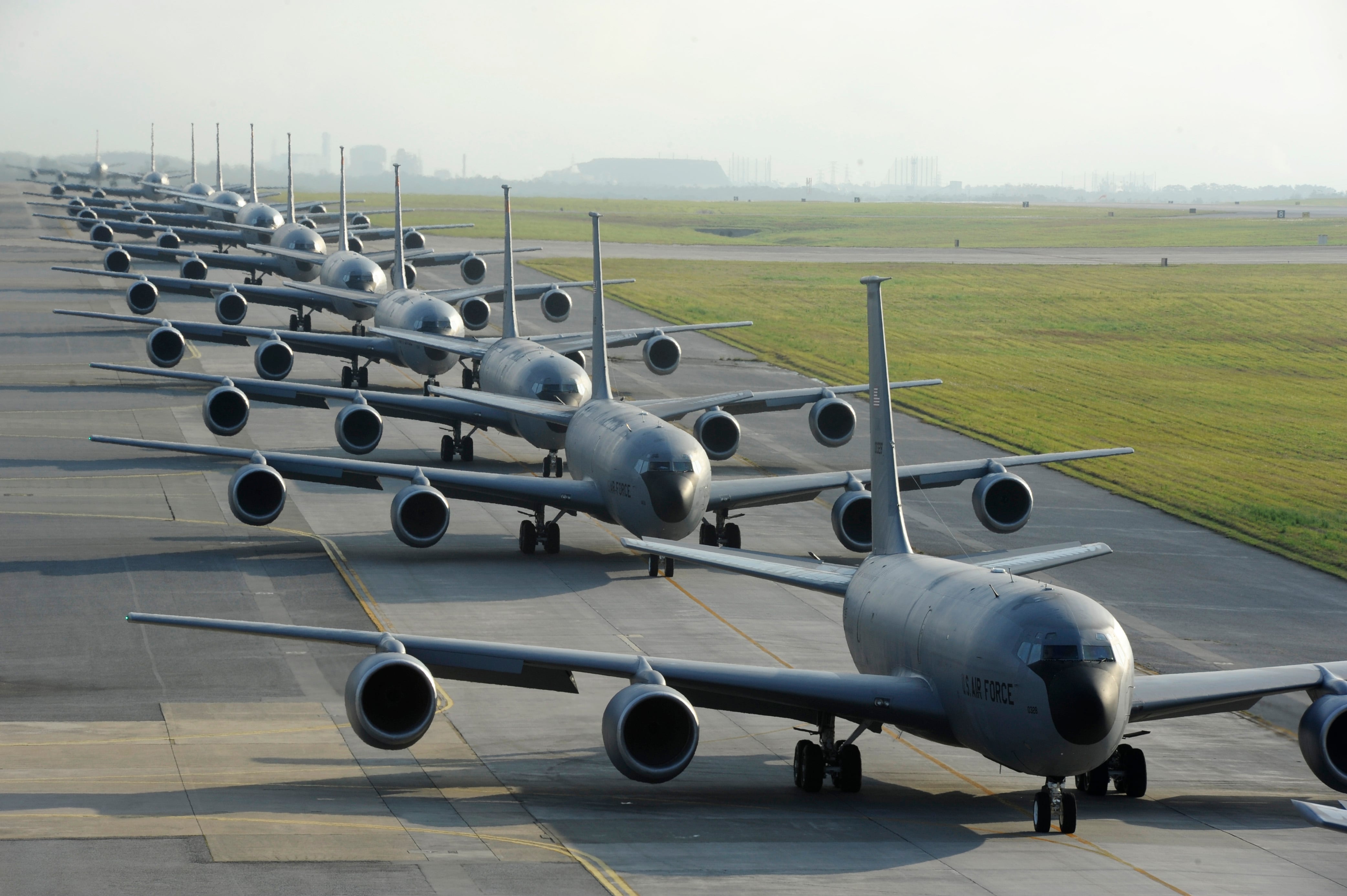SCOTT AIR FORCE BASE, Ill. — With no end in sight to the demand on the tanker fleet, the U.S. Air Force is actively seeking agreements with defense contractors for aerial refueling services.
On Dec. 17, Air Mobility Command will hold an industry day at Scott Air Force Base, Illinois, in the hopes of better understanding how it can contract for commercial air refueling services to supplement tanking missions performed by the Air Force’s KC-135s, KC-10s and KC-46s.
“We do think that this is an opportunity that needs to be pursued,” Lt. Gen. Jon Thomas, the command’s deputy chief, said during an exclusive interview with Defense News on Dec. 10. “If we can find a viable, clear path with industry, we should do it.”
RELATED

The Air Force believes there are a certain set of aerial-refueling missions conducted in a uncontested environment that could provide a predictable stream of business, Thomas said. Through the industry day, the service is hoping to better understand how companies might be able to fulfill those requirements.
“There are several providers … that would propose that they have their own tanker that’s already flying and doing great work for other air forces,” he said. “That’s fascinating to us. There’s another vendor that has procured boom-equipped tankers from a foreign air force that is a proven capability. There are some others that may be doing the same thing with a different foreign air force. So I would say that they’re out there and they’re committing to the idea that if the Air Force is serious, we’re serious about this, too.”
There are a number of parameters that industry would have to address, such as meeting the Air Force’s aircraft certification standards and the Federal Aviation Administration’s demands for refueling in U.S. airspace.
Companies must also be able to refuel aircraft using a boom — a requirement that may hinder certain tankers that use a probe and drogue for refueling.
“Right now, all commercial aerial refueling services are drogue only. It has to be a boom aircraft for the U.S. Air Force to be able to really leverage it in any meaningful way,” Thomas said.
Although Thomas declined to talk about specific vendors that could provide air refueling services, Lockheed Martin and Airbus — which joined forces in 2018 to pitch a fee-for-service model for Airbus’s A330 Multi-Role Tanker Transport — have been vocal about courting the U.S. Air Force as a customer.
Michele Evans, head of Lockheed’s aeronautics business, told reporters in June that the companies are in discussions with the U.S. military about A330 sales, leasing or a fee-for service construct, and that U.S. Transportation Command in particular showed interest.
“We’ve really been able to show them what we think is capable, feasible,” she said. “You can never have enough tanking capability. As you look at the challenges of the battlespace and the threat and capabilities, having to be standoff farther and farther, it’s a great opportunity for them to go revisit their capabilities versus capacity.”
Still, Evans acknowledged there is much to be determined, including the exact nature of the business partnership between Airbus and Lockheed, should a contract emerge, and how the company would structure a fee-for-service contract with the Air Force or other potential customers. One possible construct would involve associating a cost for each gallon of fuel delivered.
If the Air Force decides not to move forward with purchasing aerial refueling services, it still has a number of options for augmenting the tanker force.
In the near term, Air Mobility Command can retain some KC-135s that were slated to be divested as the KC-46 comes online, Thomas said. In March, Transportation Command chief Gen. Stephen Lyons told Congress that the Air Force was considering keeping as many as 28 KC-135s. The Air Force is currently debating 14 KC-135s as part of the fiscal 2021 budget, Thomas said.
“We’ll see how the president’s budget goes over. I really hope that it will allow us to retain some additional capacity. I don’t know if it will,” he said. “But that’s our first lever that we can pull."
Another option is increasing the KC-46 program of record, which currently stands at 179 tankers. However, Boeing is still in the process of making extensive changes to the aircraft’s remote vision system, which the aircraft uses for refueling, and Air Mobility Command won’t be able to consider a production increase until those fixes are made, Thomas said.
Valerie Insinna is Defense News' air warfare reporter. She previously worked the Navy/congressional beats for Defense Daily, which followed almost three years as a staff writer for National Defense Magazine. Prior to that, she worked as an editorial assistant for the Tokyo Shimbun’s Washington bureau.








